Advantages of studying MBBS in China
| 1. |
Study in Premier Government Medical Universities in China, Under Ministry of Education, Government of China |
|
|
|
|
| 3. |
Medical Universities Listed in the World Health Organization (WHO) Geneva, FAIMER etc. Graduates can apply for license with Medical Councils of more than 180 countries |
|
|
| 4. |
Education is in English Medium. |
|
|
| 5. |
Low Tuition Fees & Cost of Living. No Donation & no Hidden costs. |
|
|
| 6. |
More than 3,000 Indian students are studying in China. |
|
|
| 7. |
5 years MBBS course. Internship can be done in China or India |
|
|
| 8. |
Limited seats, Admissions on First come First Serve basis |
|
|
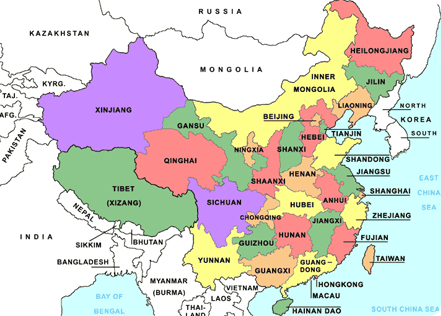 |
|
|
| 9. |
NOTE: Beware of agents offering package system in China (asking students to deposit 5 years Tuition fees and/or Hostel Fees in advance with them. NO University in China or for that matter anywhere asks for Tuition fees/Hostel fees in Advance. These agents are more likely to disappear with your hard earned money) |
|
| |
About China
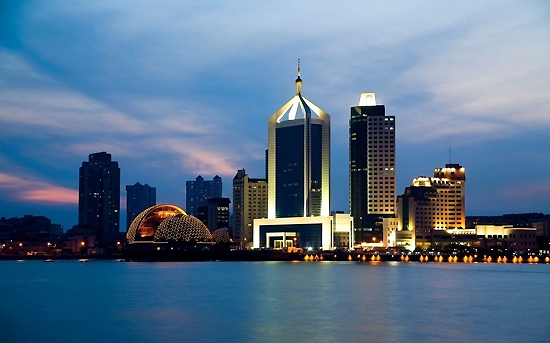 China, officially the People's Republic of China (PRC), is a sovereign state located in East Asia. It is the world's most populous country, with a population of over 1.35 billion. The PRC is a single-party state governed by the Communist Party, with its seat of government in the capital city of Beijing.
China, officially the People's Republic of China (PRC), is a sovereign state located in East Asia. It is the world's most populous country, with a population of over 1.35 billion. The PRC is a single-party state governed by the Communist Party, with its seat of government in the capital city of Beijing.
Covering approximately 9.6 million square kilometres, China is the world's second-largest country by land area, and the third or fourth-largest by total area, depending on the definition of total area. China's landscape is vast and diverse, with forest steppes and the Gobi and Taklamakan deserts occupying the arid north and northwest near Mongolia and Central Asia, and subtropical forests prevalent in the wetter south near Southeast Asia. China's coastline along the Pacific Ocean is 14,500 kilometres (9,000 mi) long and is bounded by the Bohai, Yellow, East and South China Seas.
The ancient Chinese civilization – one of the world's earliest – flourished in the fertile basin of the Yellow River in the North China Plain.
Since the introduction of economic reforms in 1978, China has become the world's fastest-growing major economy. As of 2013, it is the world's second-largest economy by both nominal total GDP and purchasing power parity (PPP), and is also the world's largest exporter and importer of goods. China is a recognized nuclear weapons state and has the world's largest standing army, with the second-largest defence budget.
China has been characterized as a potential superpower by a number of academics, military analysts, and public policy and economics analysts.
Geographical Condition
The People's Republic of China is the second-largest country in the world by land area. China has the longest combined land border in the world, measuring 22,117 km (13,743 mi) from the mouth of the Yalu River to the Gulf of Tonkin. China borders 14 nations. China extends across much of East Asia, bordering Vietnam, Laos, and Burma in Southeast Asia; India, Bhutan, Nepal and Pakistan in South Asia; Afghanistan, Tajikistan, Kyrgyzstan and Kazakhstan in Central Asia; a small section of Russian Altai and Mongolia in Inner Asia; and the Russian Far East and North Korea in Northeast Asia.
Additionally, China shares maritime boundaries with South Korea, Japan, Vietnam, the Philippines and Taiwan.
Climatic Condition
The territory of China lies between latitudes 18° and 54° N, and longitudes 73° and 135° E. China's landscapes vary significantly across its vast width. In the east, along the shores of the Yellow Sea and the East China Sea, there are extensive and densely populated alluvial plains, while on the edges of the Inner Mongolian plateau in the north, broad grasslands predominate. Southern China is dominated by hills and low mountain ranges, while the central-east hosts the deltas of China's two major rivers, the Yellow River and the Yangtze River. Other major rivers include the Xi, Mekong, Brahmaputra and Amur. To the west, major mountain ranges, most notably the Himalayas, and high plateaus feature among the more arid landscapes of the north, such as the Taklamakan and the Gobi Desert. The world's highest point, Mt. Everest (8848m), lies on the Sino-Nepalese border. The country's lowest point and the world's fourth-lowest, is the dried lake bed of Ayding Lake (-154m) in the Turpan Depression.
Economy
As of 2013, China has the world's second-largest economy in terms of nominal GDP, totalling approximately US$8.227 trillion. However, China's 2012 nominal GDP per capita of US$6,075 puts it behind around ninety countries (out of 183 countries on the IMF list) in global GDP per capita rankings. If PPP is taken into account in total GDP figures, China is again second only to the United States – in 2012, its PPP GDP reached $12.405 trillion, corresponding to $9,161 per capita.
To propel the country towards a modern, industrialized communist society, Mao Zedong instituted the Great Leap Forward in the early 1960s, although this had decidedly mixed economic results. Following Mao's death in 1976 and the consequent end of the Cultural Revolution, Deng Xiaoping and the new Chinese leadership began to reform the economy and move towards a more market-oriented mixed economy under one-party rule. Agricultural collectivization was dismantled and farmlands were privatized to increase productivity. Foreign trade was focused upon as a major vehicle of growth, leading to the creation of Special Economic Zones (SEZs), first in Shenzhen and then in other Chinese cities. Inefficient state-owned enterprises (SOEs) were restructured by introducing western-style management systems, with unprofitable ones being closed outright, resulting in massive job losses. Modern-day China is mainly characterized as having a market economy based on private property ownership, and is one of the leading examples of state capitalism.
Since economic liberalization began in 1978, China's investment- and export-led economy has grown more than a hundredfold and is the fastest-growing major economy in the world. According to the IMF, China's annual average GDP growth between 2001 and 2010 was 10.5%, and the Chinese economy is predicted to grow at an average annual rate of 9.5% between 2011 and 2015. Between 2007 and 2011, China's economic growth rate was equivalent to all of the G7 countries' growth combined. According to the Global Growth Generators index announced by Citigroup in February 2011, China has a very high 3G growth rating. Its high productivity, low labour costs and relatively good infrastructure have made it a global leader in manufacturing, but its undervalued exchange rate has caused friction with other major economies, and it has also been widely criticised for manufacturing large quantities of counterfeit goods.
China is a member of the WTO and is the world's largest trading power, with a total international trade value of US$3.87 trillion in 2012. Its foreign exchange reserves reached US$2.85 trillion by the end of 2010, an increase of 18.7% over the previous year, making its reserves by far the world's largest. China owns an estimated $1.6 trillion of US securities. China, holding over US$1.16 trillion in US Treasury bonds, is the largest foreign holder of US public debt. China is the world's third-largest recipient of inward foreign direct investment (FDI), attracting $115 billion in 2011 alone, marking a 9% increase over 2010. China also increasingly invests abroad, with a total outward FDI of $68 billion in 2010, and a number of major takeovers of foreign firms by Chinese companies.
China's middle-class population (defined as those with annual income of at least US$17,000) had reached more than 100 million by 2011, while the number of individuals worth more than 10 million yuan (US$1.5 million) was estimated to be 1.02 million in 2012, according to the Hurun Report. Based on the Hurun rich list, the number of US dollar billionaires in China increased from 130 in 2009 to 251 in 2012, giving China the world's second-highest number of billionaires. China's domestic retail market was worth over 20 trillion yuan (US$3.2 trillion) in 2012 and is now growing at over 12% annually. China is also now the world's second-largest consumer of luxury goods.
Language & Religion
The languages most spoken in China belong to the Sino-Tibetan language family. The most spoken varieties are Mandarin (the first language of over 70% of the population), Wu (includes Shanghainese), Yue (includes Cantonese and Taishanese), Min (includes Hokkien and Teochew), Xiang, Gan, and Hakka. Non-Sinitic languages spoken widely by ethnic minorities include Zhuang, Mongolian, Tibetian, Uyghur, Hmong and Korean. Standard Mandarin, a variety of Mandarin based on the Beijing dialect, is the official national language of China and is used as a lingua franca between people of different linguistic backgrounds. Written vernacular Chinese, or Beihua, is the written standard, based on the Mandarin dialect and first popularized in Ming Dynasty novels. It was adopted, with significant modifications, during the early 20th century as the national standard.
Freedom of religion is guaranteed by China's constitution. Over its history, the Chinese civilization has been influenced by various religions, including shamanic forms of religion from Central Asia, local Chinese folk religion, Taoism, Buddhism, Christianity, Islam, Manicheism, Zoroastrianism and numerous new religions. Of these, Taoism and Buddhism have had the greatest impact in shaping Chinese culture. Buddhism spread to China from India in the 1st century and became widely influential in certain periods of the history of China.
Today, according to different surveys, local ethnic religions, which sometimes fall under the label of Taoism or are administered by the Taoist clergy, are the dominant, being practiced by over 30% of the Chinese population. Buddhism is practiced by between 10.85% and 18% of the Chinese. Christianity is practiced by 3.2%, 4% to 5% of the population, while Islam by 2% of the population.
Islam in China dates to a mission in 651; over the following centuries, Muslim traders and scholars became prominent in China. Accurate statistics on China's current Muslim population are hard to find; the State Administration for Religious Affairs states there are more than 21 million Muslims in the country (1.5%–2% of the total population), with unofficial estimates ranging as high as 50 million. China also has numerous minority religions, including Hinduism, and a number of more modern religions and sects.
Education & Health
In 1986, China set the long-term goal of providing compulsory nine-year basic education to every child. As of 2007, there were 396,567 primary schools, 94,116 secondary schools, and 2,236 higher education institutions in China. As of 2007, 93.3% of the population over age 15 are literate, compared to only 20% in 1950. In 2000, China's literacy rate among 15-to-24-year-olds was 98.9% (99.2% for males and 98.5% for females). In March 2007, the Chinese government declared education a national "strategic priority"; the central budget for national scholarships was tripled between 2007 and 2009, and 223.5 billion yuan (US$28.65 billion) of extra state funding was allocated between 2007 and 2012 to improve compulsory education in rural areas. In 2009, Chinese students from Shanghai achieved the world's best results in mathematics, science and literacy, as tested by the Programme for International Student Assessment (PISA), a worldwide evaluation of 15-year-old school pupils' scholastic performance.
The Ministry of Health, together with its counterparts in the provincial health bureaux, oversees the health needs of the Chinese population. An emphasis on public health and preventive medicine has characterized Chinese health policy since the early 1950s.
Transport & Communication
Since the late 1990s, China's national road network has been significantly expanded through the creation of a network of expressways, known as the National Trunk Highway System (NTHS). By the end of 2011, China's expressways had reached a total length of 85,000 km (53,000 mi), second only to the highway network of the United States. Private car ownership is growing rapidly in China, which surpassed the United States as the world's largest automobile market in 2009, with total car sales of over 13.6 million. Analysts predict that annual car sales in China may rise as high as 40 million by 2020. China also possesses the world's longest high-speed rail network, with over 9,676 km (6,012 mi) of service routes. Of these, 3,515 km (2,184 mi) serve trains with top speeds of 300 km/h (190 mph).
China currently has the largest number of active cell phones of any country in the world, with over 1 billion users as of May 2012. It also has the world's largest number of internet and broadband users.
Culture & Society
Since ancient times, Chinese culture has been heavily influenced by Confucianism and conservative philosophies.
Chinese cuisine is highly diverse, drawing on several millennia of culinary history. The dynastic emperors of ancient China were known to host banquets with over 100 dishes served at a time, employing countless imperial kitchen staff and concubines to prepare the food. Such royal dishes gradually became a part of wider Chinese culture. China's staple food is rice, but the country is also well known for its meat dishes. Spices are endemic to Chinese cuisine. Numerous foreign offshoots of Chinese food, such as Hong Kong cuisine and American Chinese food, have emerged in the various nations which play host to the Chinese Diaspora.
China has one of the oldest sporting cultures in the world. There is evidence that a form of association football was played in China around 1000 AD. Today, some of the most popular sports in the country include martial arts, basketball, football, table tennis, badminton, swimming and snooker. Board games such as go (known as weiqi in China), xiangqi, and more recently chess, are also played at a professional level. Physical fitness is widely emphasized in Chinese culture. Morning exercises are a common activity, with elderly citizens encouraged to practice qigongand t'ai chi ch'uan. Young people in China are also keen on football and basketball, especially in urban centers with limited space and grass areas. The American National Basketball Association has a huge following among Chinese youths, with ethnic Chinese players such as Yao Ming being held in high esteem. Commercial gyms and fitness clubs are rapidly gaining popularity in China, with over 3,000 such establishments serving around 3 million active subscribers in China's major cities in 2010.
China hosted the 2008 Summer Olympics in Beijing, where its athletes received 51 gold medals – the highest number of gold medals of any participating nation that year. China also won the most medals of any nation at the 2012 Summer Paralympics, with 231 overall, including 95 gold medals. China will host the 2013 East Asian Games in Tianjin and the 2014 Summer Youth Olympics in Nanjing.
Seats in China in various years
|
Sub.: New list of Chines Medical Institutions admitting International Students for Academic Year 2016-2017
|
|
S/N
|
INSTITUTIONS
|
ENROLLMENT QUOTA
|
|
1.
|
CAPITAL MEDICAL UNIVERSITY
|
100
|
|
2.
|
JILIN UNIVERSITY
|
100
|
|
3.
|
DALIAN MEDICAL UNIVERSITY
|
100
|
|
4.
|
CHINA MEDICAL UNIVERSITY
|
100
|
|
5.
|
TIANJIN MEDICAL UNIVERSITY
|
100
|
|
6.
|
SHANDONG UNIVERSITY
|
100
|
|
7.
|
FUDAN UNIVERSITY
|
100
|
|
8.
|
XINJIANG MEDICAL UNIVERSITY
|
100
|
|
9.
|
NANJING MEDICAL UNIVERSITY
|
100
|
|
10.
|
JIANGSU UNIVERSITY
|
100
|
|
11.
|
WENZHOU MEDICAL UNIVERSITY
|
100
|
|
12.
|
ZHEJIANG UNIVERSITY
|
100
|
|
13.
|
WUHAN UNIVERSITY
|
100
|
|
14.
|
HUAZHONG UNIVERSITY OF SCIENCE & TECHNOLOGY
|
100
|
|
15.
|
XI’AN JIAOTONG UNIVERSITY
|
100
|
|
16.
|
SOUTHERN MEDICAL UNIVERSITY
|
100
|
|
17.
|
JINAN UNIVERSITY
|
100
|
|
18.
|
GUANGXI MEDICAL UNIVERSITY
|
100
|
|
19.
|
SICHUAN UNIVERSITY
|
100
|
|
20.
|
CHONGQING MEDICAL UNIVERSITY
|
100
|
|
21.
|
HARBIN MEDICAL UNIVERSITY
|
60
|
|
22.
|
BEIHUA UNIVERSITY
|
60
|
|
23.
|
LIAONING MEDICAL UNIVERSITY
|
60
|
|
24.
|
QINGDAO UNIVERSITY
|
60
|
|
25.
|
HEBEI MEDICAL UNIVERSITY
|
60
|
|
26.
|
NINGXIA MEDICAL UNIVERSITY
|
60
|
|
27.
|
TONGJI UNIVERSITY
|
60
|
|
28.
|
SHIHEZI UNIVERSITY
|
60
|
|
29.
|
SOUTHEAST UNIVERSITY
|
60
|
|
30.
|
YANGZHOU UNIVERSITY
|
60
|
|
31.
|
NANTONG UNIVERSITY
|
60
|
|
32.
|
SOOCHOW UNIVERSITY
|
60
|
|
33.
|
NINGBO UNIVERSITY
|
60
|
|
34.
|
FUJIAN MEDICAL UNIVERSITY
|
60
|
|
35.
|
ANHUI MEDICAL UNIVERSITY
|
60
|
|
36.
|
XUZHOU MEDICAL COLLEGE
|
60
|
|
37.
|
CHINA THREE GORGES UNIVERSITY
|
30
|
|
38.
|
ZHENGZHOU UNIVERSITY
|
60
|
|
39.
|
GUANGZHOU MEDICAL UNIVERSITY
|
60
|
|
40.
|
SUN YAT-SEN UNIVERSITY
|
60
|
|
41.
|
SHANTOU UNIVERSITY
|
60
|
|
42.
|
KUNMING MEDICAL UNIVERSITY
|
60
|
|
43.
|
SOUTHWEST MEDICAL UNIVERSITY
|
60
|
|
44.
|
NORTH SICHUAN MEDICAL UNIVERSITY
|
60
|
|
45.
|
XIAMEN UNIVERSITY
|
60
|
|
|
TOTAL
|
3470
|
View the information on MCI official website
Session - 2015-16 and Earlier
List of Universities issued by the Ministry of Education of the People’s Republic of China every year
http://www.moe.gov.cn/publicfiles/business/htmlfiles/moe/moe_850/201503/184506.html
& is updated every year by the Medical Council of India in coordination with the Indian Embassy in Beijing
on Medical Council of India website -
www.mciindia.org/MediaRoom/ListofChinaColleges.aspx
|
| S No. |
College / University |
Seats in Session |
| 2015 |
2014 |
2013 |
2012 |
2011 |
2010 |
2009 |
2008 |
2007 |
| 1 |
Anhui Medical University |
60 |
60 |
50 |
50 |
60 |
30 |
30 |
|
|
| 2 |
Beihua University |
|
60 |
180 |
100 |
60 |
30 |
|
|
|
| 3 |
Capital Medical University |
100 |
100 |
100 |
100 |
100 |
100 |
100 |
100 |
100 |
| 4 |
Central China Science
and Technology University |
|
|
|
0 |
120 |
|
|
|
|
| 5 |
Central South University |
|
|
120 |
120 |
|
|
|
|
|
| 6 |
China Medical University |
100 |
100 |
200 |
120 |
|
60 |
100 |
120 |
80 |
| 7 |
China Three Gorges University |
30 |
60 |
80 |
50 |
|
|
|
|
|
| 8 |
Chongqing Medical University |
100 |
100 |
180 |
120 |
100 |
180 |
180 |
180 |
100 |
| 9 |
Dali University |
|
60 |
150 |
150 |
150 |
|
|
|
|
| 10 |
Dalian Medical University |
100 |
100 |
200 |
200 |
200 |
200 |
200 |
128 |
100 |
| 11 |
Dongnan University |
|
|
|
|
|
80 |
90 |
120 |
|
| 12 |
Fudan University |
100 |
100 |
40 |
30 |
60 |
60 |
60 |
60 |
|
| 13 |
Fujian Medical University |
60 |
60 |
90 |
90 |
90 |
60 |
60 |
|
|
| 14 |
Guangxi Medical University |
100 |
100 |
150 |
110 |
110 |
110 |
110 |
100 |
55 |
| 15 |
Guangzhou Medical University |
60 |
60 |
50 |
30 |
30 |
20 |
|
|
|
| 16 |
Harbin Medical University |
60 |
60 |
200 |
100 |
200 |
50 |
100 |
100 |
50 |
| 17 |
Hebei Medical University |
60 |
60 |
120 |
120 |
120 |
120 |
70 |
|
|
| 18 |
Hebei United University |
|
|
70 |
50 |
|
|
|
|
|
| 19 |
Huazhong University Of Science &
Technology |
100 |
100 |
120 |
120 |
|
120 |
120 |
120 |
100 |
| 20 |
Jiamusi University |
|
60 |
150 |
150 |
150 |
60 |
|
|
|
| 21 |
Jiangsu University |
100 |
100 |
90 |
90 |
90 |
|
|
|
|
| 22 |
Jilin University |
100 |
100 |
120 |
120 |
120 |
100 |
100 |
100 |
100 |
| 23 |
Jinan University |
100 |
100 |
100 |
0 |
100 |
|
|
|
|
| 24 |
Kunming Medical University |
60 |
60 |
120 |
80 |
60 |
|
|
|
|
| 25 |
Lanzhou University |
|
|
10 |
15 |
50 |
|
|
|
|
| 26 |
Liaoning Medical University |
60 |
60 |
200 |
100 |
|
|
|
|
|
| 27 |
Luzhou Medical College |
60 |
60 |
80 |
|
|
|
|
|
|
| 28 |
Medical University of China |
|
|
|
|
120 |
|
|
|
|
| 29 |
Nanchang University |
|
|
160 |
160 |
160 |
60 |
|
|
|
| 30 |
Nanjing Medical University |
100 |
100 |
100 |
100 |
100 |
100 |
50 |
50 |
100 |
| 31 |
Nanfang Medical University |
|
|
|
|
|
|
150 |
150 |
|
| 32 |
Nantong University |
60 |
60 |
90 |
60 |
60 |
80 |
80 |
80 |
|
| 33 |
Ningbo University |
60 |
60 |
150 |
60 |
40 |
|
|
|
|
| 34 |
North China University |
60 |
|
|
|
|
|
|
|
|
| 35 |
Ningxia Medical University |
60 |
60 |
60 |
60 |
60 |
60 |
|
|
|
| 36 |
North Sichuan Medical University |
60 |
60 |
50 |
|
|
|
|
|
|
| 37 |
Qingdao University |
60 |
60 |
60 |
60 |
60 |
60 |
60 |
120 |
60 |
| 38 |
Sanxia University |
|
|
|
|
80 |
|
|
|
|
| 39 |
Shandong University |
100 |
100 |
80 |
80 |
80 |
100 |
80 |
100 |
60 |
| 40 |
Shantou University |
60 |
60 |
10 |
15 |
15 |
30 |
|
|
|
| 41 |
Shihezi University |
60 |
60 |
120 |
80 |
120 |
|
|
|
|
| 42 |
Sichuan University |
100 |
100 |
150 |
120 |
100 |
100 |
100 |
100 |
100 |
| 43 |
Suchou / Soochow University |
60 |
60 |
100 |
100 |
|
100 |
100 |
140 |
|
| 44 |
South East University |
60 |
60 |
120 |
120 |
90 |
|
|
|
120 |
| 45 |
Nanfang / Southern Medical University |
100 |
100 |
200 |
180 |
180 |
150 |
|
|
100 |
| 46 |
Suzhou University |
|
|
|
|
65 |
|
|
|
80 |
| 47 |
Sun Yat-Sen University |
60 |
60 |
100 |
100 |
|
|
|
|
|
| 48 |
Taishan Medical University |
|
|
|
150 |
150 |
|
|
|
|
| 49 |
Tianjin Medical University |
100 |
100 |
200 |
200 |
180 |
180 |
180 |
180 |
120 |
| 50 |
Tongji University |
60 |
60 |
50 |
30 |
30 |
|
|
|
|
| 51 |
Weifang Medical University |
|
60 |
90 |
60 |
60 |
|
|
|
|
| 52 |
Wenzhou Medical College |
100 |
100 |
150 |
150 |
150 |
150 |
150 |
150 |
80 |
| 53 |
Wuhan University |
100 |
100 |
120 |
120 |
120 |
100 |
100 |
100 |
100 |
| 54 |
Xi’an Communication University |
|
|
|
|
140 |
|
|
|
|
| 55 |
Xi’an Jiaotong University |
100 |
100 |
120 |
120 |
|
|
120 |
120 |
120 |
| 56 |
Xiamen University |
60 |
60 |
100 |
80 |
80 |
|
|
|
|
| 57 |
Xinjiang Medical University |
100 |
100 |
150 |
150 |
150 |
150 |
150 |
150 |
100 |
| 58 |
Xinan Transportation University |
|
|
|
|
|
100 |
|
|
|
| 59 |
Xuzhou Medical College |
60 |
60 |
100 |
80 |
50 |
|
|
|
|
| 60 |
Yangzhou University |
60 |
60 |
100 |
60 |
60 |
|
|
|
|
| 61 |
Zhejiang University |
100 |
100 |
120 |
120 |
120 |
90 |
90 |
120 |
60 |
| 62 |
Zhengzhou University |
60 |
60 |
200 |
200 |
200 |
200 |
200 |
180 |
100 |
| 63 |
Zhong Shan University |
|
|
|
|
100 |
|
|
|
80 |
| 64 |
Zhongnan University |
|
|
|
|
120 |
120 |
60 |
60 |
30 |
| |
TOTAL |
3470 |
3680 |
6020 |
5030 |
5010 |
3310 |
2990 |
2928 |
2095 |
|
|
|
|
|
|
|
|
|
|
|







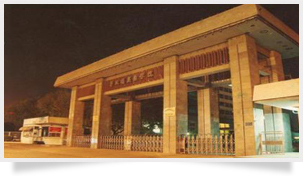
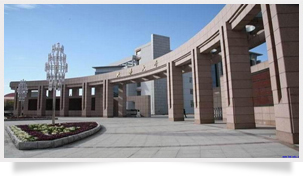
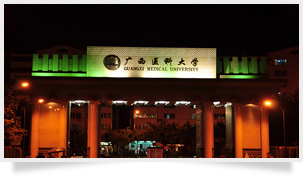

 China, officially the People's Republic of China (PRC), is a sovereign state located in East Asia. It is the world's most populous country, with a population of over 1.35 billion. The PRC is a single-party state governed by the Communist Party, with its seat of government in the capital city of Beijing.
China, officially the People's Republic of China (PRC), is a sovereign state located in East Asia. It is the world's most populous country, with a population of over 1.35 billion. The PRC is a single-party state governed by the Communist Party, with its seat of government in the capital city of Beijing. 